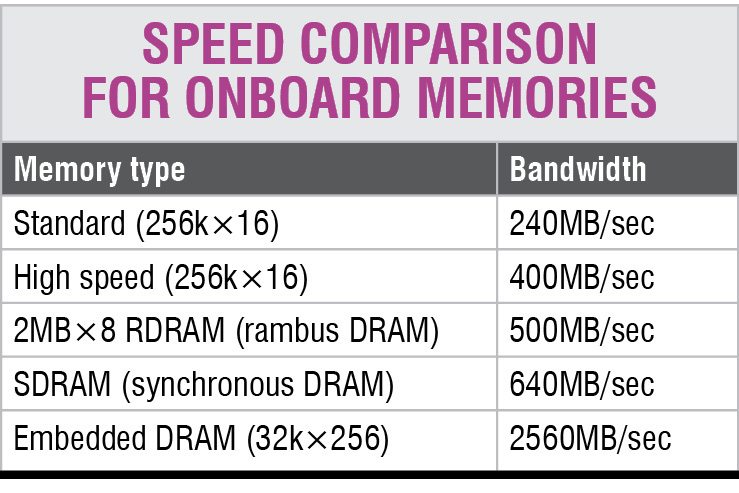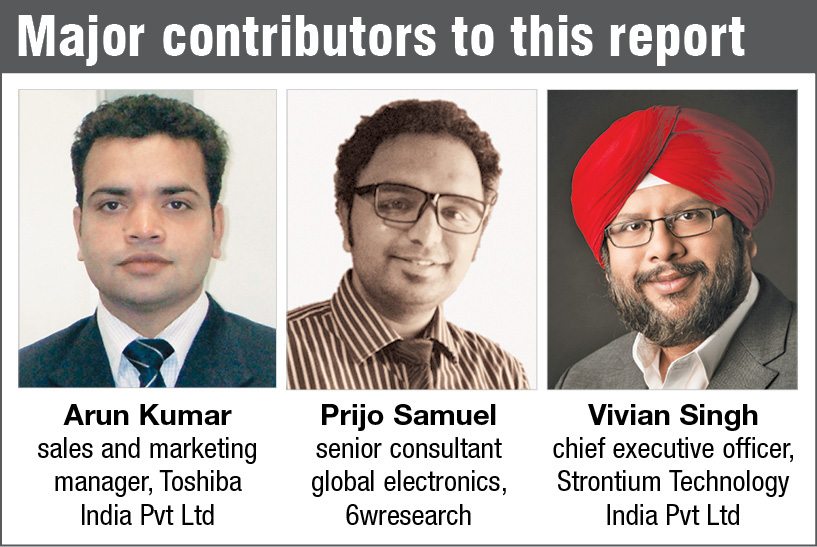Let us take a look at what a minute looks like to a Big Data analyst.
- 20.8 million messages sent on WhatsApp
- 2.4 million searches generated on Google
- 2.78 million videos watched on YouTube
- 1.04 million videos watched on Vine
- 700,000 people logging on to Facebook
Looks like a lot of big numbers just for social media. Even with this rise of social media, millions of emails are still sent every minute. Despite an estimated international Internet connectivity at about 3.2 billion, those are some very huge numbers. So where does this data go?
Data centres defining bulk storage
Storing all recorded information requires heavy-duty data storage devices. This is usually done in data centres. Once stored, accessing these is another concern, which calls for specialised data storage devices with ultra-high-speed data-access capabilities. These have to be easily accessible with fast and accurate calculations and analytics being done on these.
Onboard, the memories forgotten. Bulk storage of data calls for huge storage spaces. This increases the access time even with the best of systems. Solution to this comes in the form of various onboard memories, ranging from random access memory (RAM) to registers, which are very fast, and hence improve the computational calibre of the system.
We often fail to consider onboard memories while discussing storage. Consumerisation of memory has provided easy access to storage devices like thumb drives and external hard disk drives (HDDs), making registers and embedded memories just for design and development engineers. With data speeds of about 400MB/sec under ideal conditions, these are still far behind embedded dynamic random access memory (DRAM).

Memory design: Experts talk
Arun Kumar, sales and marketing manager, Toshiba India Pvt Ltd, says, “Flash memories have realised an immense range of applications that include memory cards, solid-state drives (SSDs) and even industrial equipment.”
Today we have a lot of memory devices ranging from multi-TB hard drives to registers in kilobytes that have to be designed and developed according to the processing capabilities. Vivian Singh, chief executive officer, Strontium Technology India Pvt Ltd, adds, “Storage products need to meet the physical settings and fulfil the performance/behaviour with various hosts.”
Any storage can be measured on the basis of three basic factors. First, cost of the memory module must be very low; second, it has to be very fast; and third, it has to be able to store data when power is switched off, that is non-volatile.
Development challenges. Memory is an integral part of any electronic system. Hence, there is a need for memory to be fast and sized according to the application. Additionally, according to Singh, “There is always the challenge to bring the laboratory experiment to practical and actual mass production.” On one hand we can create an ideal memory in the lab, but on the other if it raises production challenges, it would not help in the development of storage.
Designing the system and employing memory. Once developed, implementing the memory into devices is another concern. Suitable buses are required for data access that do not compromise data access speeds.
Memory design has to follow certain guidelines in order to comply with the standards. While this helps with efficiency of the memory, it restricts design. According to Singh, “Integration will be mild since it has to abide by the standard form factor laid by the associations.”

A look at the developments
We can all accept the fact that NAND flash came as the turning point for memory. Since then it has seen many changes, and today we have 512GB in a micro-SD-size form factor. Such additions and changes in the basic structure of memory have made it more lucrative and affordable for the user.
Popularisation of SSD. With the commercialisation of SSDs, there has been a rapid change in the way our devices work. “When we talk about SSDs, previously there was only SLC technology that was primarily targeted at the enterprise sector. It is further being evolved into MLCs, eMLCs, TLC, 3D TLC NAND and now M.2 form factor based SSDs targeted at both commercial and civil sector,” says Prijo Samuel, senior consultant global electronics, 6wresearch.
On-the-go connectivity. With consumer products being in the limelight, one technology making rounds is on-the-go (OTG) connectivity. Due to its ease of connectivity with smartphones as well as computers, it has become a handy tool with more products being launched in this segment.
Kingston DataTraveler MicroDuo 3.0 and SanDisk iXpand flash drives are some products that allow a user to access data to and from smartphones and tablets. OTG compatibility makes these devices versatile and allows a user to free memory in urgency.Automatic data correction. Among several methods that make the memory smart and avoid unwanted bit-flips, immunity-aware programming and error correction codes (ECCs) have come up. “With evolving NAND manufacturing processes, ECC is becoming notably more sophisticated, imposing heavier burdens on the host processor, especially for large-capacity NAND,” says Kumar. ECC memory can detect and correct most type of internal data corruption.
Easier access to the processor (cache-focused designing). Read only memory (ROM) is for permanent storage of data within a system on chip (SoC) or other integrated circuit applications. ARM offers both via programmable ROM and diffusion programmable ROM, delivering maximum flexibility in design application. High-density and low-power ROM memories are suitable for BOOT code.
More size in less space. Access time is directly related to the distance from the processor. In order to reduce this access time/distance from the processor, the memory module has to be designed under certain constraints. There is only so much memory you can fit into a memory module, while keeping it close to the processor. This calls for integrating more memory into lesser space.
Accessing 3D. Once you reach a strong foundation, there is nowhere to go but up. Keeping this in mind, we have memory concepts trying to access the third dimension (3D) and keep the memory closer to the processor in order to increase data-processing speeds. Singh makes it simpler to understand with, “3D NAND takes today’s flash, which is built on a horizontal plane, and turns it sideways.”
Moving to 3D allows for a higher bit density in a smaller footprint while eliminating the limitation on lithography patterning.
Challenges still. SSDs are taking over the market, and very soon we might see the traditional magnetic disk only in old servers or as images. However, cost management is still a factor. “Due to high cost constraints of SLCs and MLC SSDs, end users from both commercial and residential sector prefer hybrid HHDs over traditional HDDs, along with low-cost TLC SSDs,” explains Samuel.

Storage wars
“With flash technology advancement from the beginning of SLCs, MLCs to TLCs and now 3D NAND, greater capacity flash storage would be a norm in the near future,” says Singh.
Stored data is constantly increasing and, by some estimates, the indexed Internet data will cross 1000 yottabytes (YB) very soon. This calls for similar storage options. Today, we have SSD memories that are compact, can carry higher data and are faster than traditional magnetic memories. Today is an era of information, and the highest storage options have to allow better analytics and success.
Saurabh Durgapal is working as technology journalist at EFY







